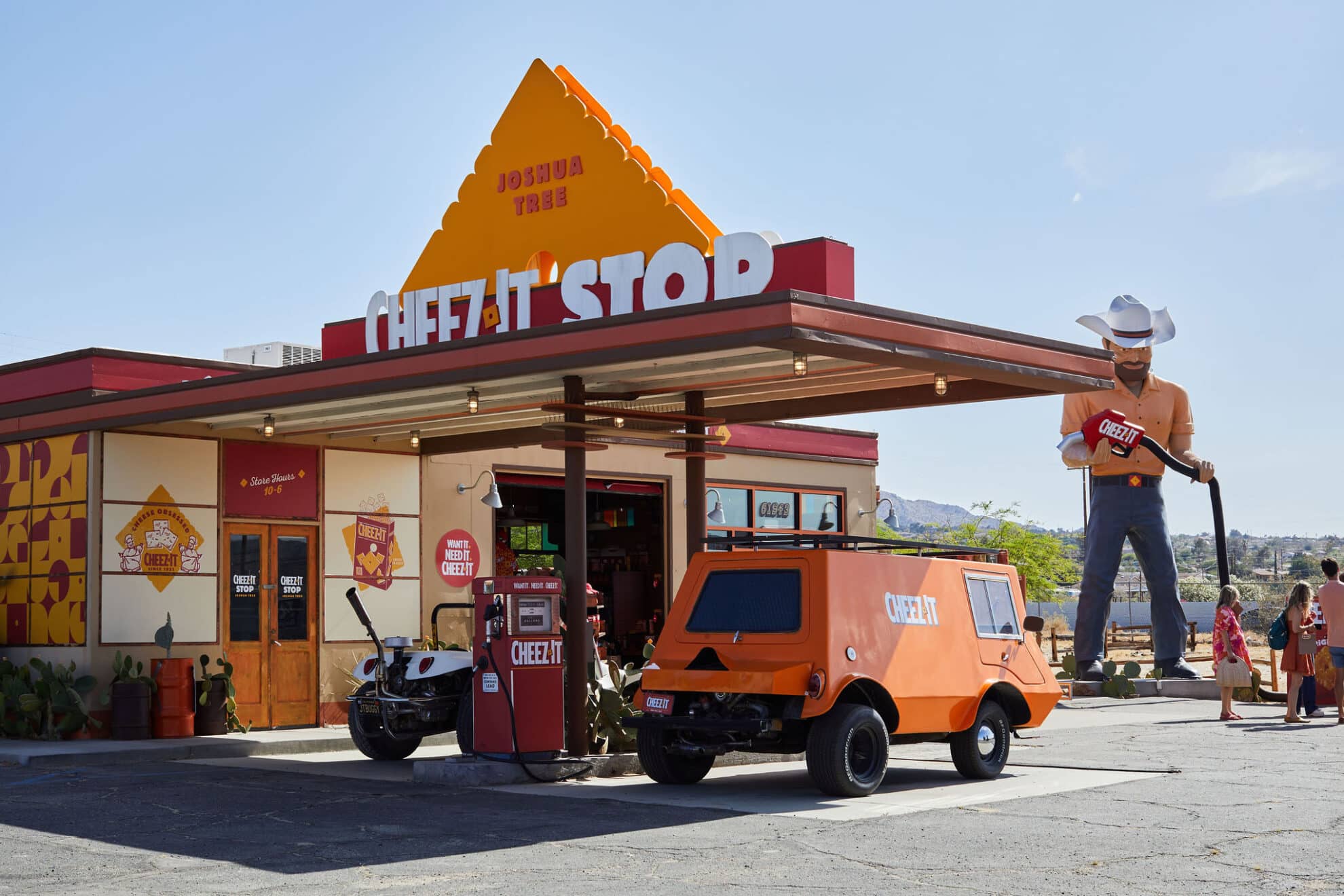Brands take residence: The rising trend of brand takeovers.

Christie Decker – Event Director – Sense New York.
In the ever-evolving landscape of brand experiences, a captivating trend has taken center stage – the takeover of traditional spaces by brands committed to creating unique and immersive experiences. From restaurants and cafes to gas stations and corner stores, this innovative approach is reshaping the way consumers engage with their favorite brands.
This trend is more than a mere marketing strategy; it’s a clever way to elevate the traditional brick-and-mortar experience. Brand takeovers are characterized by their meticulous attention to detail during these transient residencies, injecting a burst of creativity into commonplace activities. By infusing branded touchpoints and delivering routine experiences innovatively, these takeovers not only capture attention but ensure that each moment is filled with surprise and delight, transforming mundane tasks into memorable and socially shareable encounters.
Restaurants and cafes
One industry in particular that is an obvious and popular target for this trend are restaurants and cafes. As studies from the U.S. Census Bureau confirms, consumer spending in restaurants saw a 9.7 percent lift year over year last quarter. Between consumers seeking out dining experiences, and having the opportunity of a long dwell period, it is no wonder brands, high-end luxury brands in particular, are setting up residency in more and more restaurants.
The culinary experience is a seamless way to weave in a brand’s identity. Burberry did a complete takeover and transformation of Norman’s Cafe in London during Fashion Week in 2023. The cafe featured Burberry’s seasonal check in knight blue, which covered the exterior, interior, and even the menu. Exclusive menu items inspired by Burberry’s culture were showcased, accompanied by live music, DJ sets, and workshops. Such takeovers not only attract a diverse clientele but also generate buzz around the brand, creating a sense of exclusivity and excitement, especially when it is impossible to get in.
Gas stations
Once merely pit stops for fuel, snacks, and convenience items, gas stations are now becoming unexpected canvases for brand creativity, especially Stateside. Tons of unexpected companies are seizing the opportunity to transform these roadside spaces into hubs of innovation and engagement.
Cheez-It took over a renovated 1949 service station along the highway route to Joshua Tree. The retro pop-up was filled with Instagram-worthy aisles stocked with branded collectibles, merch, and, of course, Cheez-It snacks. Outside, the brand replaced the gas pumps with the “World’s First and Only Cheez-It Pump”, which pumped a stream of Cheez-It bags right into your car window.
The campaign served as a clever nod to the popular road trip destination, firmly establishing Cheez-It as the quintessential road-trip snack. By creating this brand-first desert outpost, the company aimed to capture the excitement of summer road trips, encouraging fans to refuel with Cheez-It throughout their adventures.
Corner stores
For city dwellers who run into their favorite corner store almost every day, this pop-up trend is hard to ignore. By taking over these local retail spaces, brands can create a direct and tangible connection with their target audience. The intimate setting of a corner store allows for a more personal and memorable interaction, breaking away from the noise of traditional advertising channels.
A recent, notable example of this trend unfolded in London, where White Claw hosted the “Claw-ner Shop”, as a space dedicated to the UK’s love of house parties. The carefully curated corner store featured an array of essentials for hosting pre-drinks, including cups, disco balls, snacks, and, naturally, White Claws.
The event spanned two days and operated on a ticketed basis, with the noteworthy twist that all items were offered free of charge, albeit with limits per customer. This innovative approach not only aligned perfectly with its community, but also effectively showcased White Claw’s commitment to engaging its audience in a memorable and generous way.
One of the key drivers behind this trend is the desire for brands to connect with consumers on a deeper level. By taking over unexpected spaces, companies can break free from traditional marketing channels and establish a direct and personal connection with their target audience. These takeovers allow brands to showcase their personality, values, and products in a way that transcends conventional advertising. Social media amplifies the impact, turning these temporary transformations into shareable moments that further elevate brand awareness. As this trend continues to evolve, we can expect more creative collaborations that redefine the boundaries between commerce and experience.